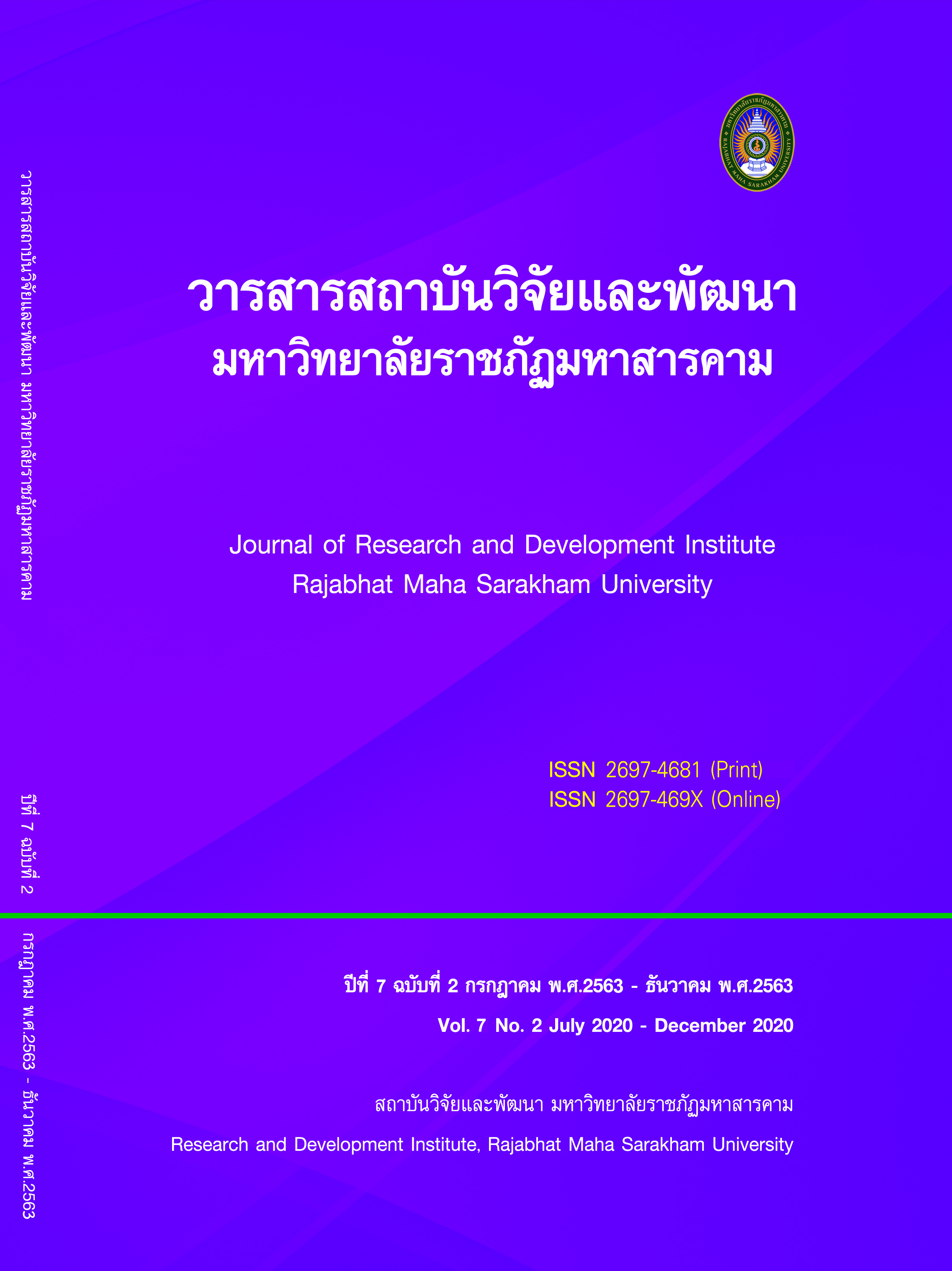Strategic Management of Microenterprises in the Cha-am and Hua Hin Districts
Keywords:
Strategic, Management, MicroenterprisesAbstract
This study’s objectives were to study the strengths, weakness, opportunities, threats to the business management, and management strategy of microenterprises in the Cha-am and Hua Hin districts. This study took on a qualitative method by conducting in-depth interviews of 40 microenterprises with accidental sampling and snowball sampling. It then applied content analysis and descriptive analysis to analyze the data. The study found that a strength is using little money for investment, a weakness is lacking skill and knowledge, and an opportunity is having a government policy that encourages more microenterprises. In addition, regarding strategic management, an entrepreneur should be service-minded, have good financial management, have an accounting system, and be able to think creatively.
References
References
Baron, R. A., Scott A. & Shane, S. A. (2005). Entrepreneurship: A Process Perspective. Mason, OH: Thomson South-Western.
Chistianty, G. (2018). Asia: Thailand to increase SMEs by over 3 million in 2018. [Online] https://www.rfigroup.com/rfi-group/news/asia-thailand-increase-smes-over-3-million-2018
Chuta, E. (1995). Growth and dynamism among rural small-scale enterprises: information gaps. [Online]. http://www.treesforlife.info/fao/Docs/P/s8380e /s8380e07.htm#TopOfPage
McCarthy, E. Jerome. (1960). Basic Marketing: A Managerial Approach. Homewood, Illinois: R.D. Irwin.
Ministry of industry. (2017). 3S Strategies to fix the weakness of SMEs. [Online].http://www.industry.go.th/industry/index.php/th/knowledge/item/39482-3s-smes
Nath Amornpinyo. (2013). “A sustainable Success Model of Micro Entrepreneur in Upper Northeast, Thailand”. Sripatum Chonburi Journal, 9 (3) : 57-66.
Oldham, G. R., & Cummings, A. (1996). “Employee creativity: personal and contextual factors at work”. Academy of Management Journal 39(3): 607–634.
Richard, T. Walls. (2001). “Microenterprising and people with disabilities: strategies for success and failure”. Journal of Rehabilitation, 67(2): 29-35.
Rizov, M. & Swinnen, F. M. (2004). “Human capital, market imperfections, and labor reallocation in transition”. Journal of Comparative Economics, 32(4): 745-774.
Shaw, J. (2004). “Microenterprise Occupation and Poverty Reduction in Microfinance Program: Evidence from SriLanka”. World Development Journal, 32 (7): 1247-1264.
Smart SME. (2016). Do you know yet? What are the problems with Thai SMEs?. [Online]. https://www.smartsme.co.th/content/47184
Viroj Jadesadalug and Tanutporn Chatwong. (2018). “The Competitive Advantage Strategy Of Fresh Coffee Shop Enterprises In Rachanusorn Park Community Mueang Lopburi District, Lopburi)”. Veridian E-Journal, Silpakorn University, 11(1): January-April 2018
Warren, M. (2019). Word of Mouth Marketing in 2019: How to Create a Strategy for Social Media Buzz & Skyrocket Referral Sales. [Online]. https://www.bigcommerce.com/blog/word-of-mouth-marketing/#what-is-word-of-mouth-marketing [22 December 2019]
Downloads
Published
How to Cite
Issue
Section
License
Articles that are published are copyrighted by the authors of the articles







